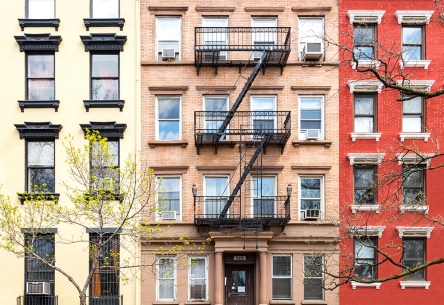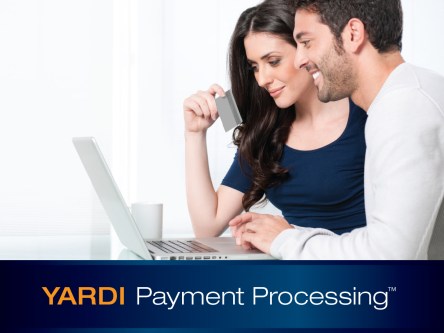Last year, New York state implemented new protections for residents of rent-stabilized and market-rate housing, including the conditions under which rent hikes and evictions are allowed. Affordable housing advocates saw the landmark Housing Stability and Tenant Protection Act of 2019 as vital to helping low-income people avoid homelessness in expensive markets such as New York City. Skeptics predicted it would backfire and reduce incentives to develop, invest in and manage rental housing. The law has been under siege in the courts from landlord interests who claim it violates the Constitution’s taking and due process provisions. One year into the new era, has either side been proven right? Obviously, a lot has changed in the New York rental market since the law was signed in June 2019. But in December of that year, before the COVID-19 pandemic took hold, the New York Times reported that evictions in the state dropped by 20% in the preceding six months. State and federal provisions put in place during COVID have further strengthened eviction protections for more than 1.5 million state residents not able to pay rent due to the pandemic. In April and May, rents in New York City actually went up year over year. The Times reported in June that “those looking to sign or renew leases in the last few months say that while some landlords are grudgingly offering short-term concessions, like a free month of rent, most are unwilling to budge on pre-pandemic pricing and, in some cases, are even increasing rents.” And how about rent payments? Yardi Matrix data collected in July revealed rent declines ranging from 0.8% to 1.6% in Brooklyn, Manhattan and Queens that month, while occupancy levels in the metro have been flat for several months. “With the vacancy rate where...
Electronic Payments
5 Reasons You Need Them Now
It’s 2020 and there are still plenty of multifamily properties that are missing out on the benefits of electronic payments. If you’re still not sure if electronic payment processing is worth it, below are five great reasons to make the switch. Show prospects that you are not a dinosaur. Today’s renters expect electronic payments. A study by the NMHC/Kingsley reports that 92 percent of respondents consider online rent payment an important resident portal feature. If you’re operating under an outdated paper system, you’re making your neighboring competitors more appealing. Vendors will dig your modern ways, too. Vendors want to know that they will receive prompt payments for their services. Electronic payments eliminate the “check is in the mail” delay which can improve your relationship and promote faster service in the future. Make it easier for residents to give you their money. Electronic payments offer convenience, versatility and instant confirmation. That’s why 78% of renters prefer to pay electronically! You can also eliminate lost check disputes. All electronic payment transaction can be easily tracked. Automatic record keeping benefits you and your residents. Receive more payments on time. When residents can pay by ACH, debit or credit card, text, and WIPS they are more likely to pay on time. (Who wants to pay late fees?) Yardi client Roscoe Properties’ Mariana Estrada, Vice President, Operations explains, “We collected 95 percent of payments due — on time and electronically — thanks to Yardi Payment Processing. In the first week of the month we collected $9 million across our portfolio. That’s money in the bank without staff intervention.” Make bookkeeping easier. Automated payments save time and improve accuracy. Each transaction is organized and automatically entered into Yardi Voyager. There are no bank runs or batches to mail to corporate....
America’s Best Cities...
Comparing Rents at $1,220
Forbes recently released this year’s list of America’s Best Cities for Raising a Family. We’ve applied the Yardi Matrix national average rent of $1,220 in each one of the Forbes top 10 cities to give you an idea of your dollar’s worth. About the List Forbes created the list by analyzing the following data points: median household income the percentage of owner-occupied households percent of population under 18 average commuting delays violent crime rates per 100,000 inhabitants local school quality cost of childcare by state cost of living housing affordability The Unites States Census Bureau, the Federal Bureau of Investigation, Texas Transportation Institute, greatschools.org, Center for Regional Economic Competitiveness, and the National Association of Home Builders provide the data for Forbes. Slowing Rent Growth Yardi Matrix monthly report analyses data from 119 markets to determine the national average rent. It’s the eighth month that rents have continued to climb to all-time highs, though it seems as though they may be losing momentum. Overall rent growth is slowing down. A decline in job growth and occupancy may keep the average rent from skyrocketing higher. Ultimately, that may mean that your dollar stretches farther in coming months. But this is where we are at now: Provo, UT Provo (pictured) is considered Forbes best place to live while you’re raising a family. This city records low crime rates, stellar school quality, and light traffic. Residents here, who tend to be younger adults, enjoy also relish homeownership en masse. For renters, $1,160 will open the doors to a pet-friendly townhouse with 2 bedrooms and 1 bathroom spread across 900 square feet. While it’s cozy, it also comes with plenty of character. Hardwood floors, classic arches in the walkways, and a large eat-in kitchen make it easy to envision raising a family there....
Homeownership
Do salaries stack up?
Finder.com recently gathered data on 78 cities throughout the US. The figures were used to determine the salaries needed to buy a home and live comfortably within these cities. The average wage in the US–$52,250 according to the US Census Bureau—sustains homeownership in only 46 percent of the listed cities. Realistically, the numbers are even more conservative than the data would suggest. Of the cities examined, the top ten cities on the list that required the highest salaries would not surprise anyone. California cities occupy nearly half of the top ten. San Francisco led the pack, suggesting a salary of at least $180,600 for the average home priced at a cool $1,119,500. San Jose and Los Angeles came in second and third, respectively. A resident earning $129, 864 could afford the average home in San Jose while $90,244 is needed in Los Angeles. My beloved Atlanta comes in at 45 on the list. The average home, priced at $180,000, requires a salary of about $51,551. Jackson, MS, wraps up the list. Residents earning $43,265 can ideally afford to buy a home and live comfortably. In defining what it means to live comfortably and buy a home, the site made several assumptions that simply don’t resonate with many Americans. We will take the Atlanta market, for example. For buyers seeking a home in the $180,000s, the assumption that the homebuyer has the ability to pay off annual non-mortgage related household debt and has saved up $36,000 as a down payment is unrealistic. Manuel Cabrera, Branch Manager with CalAtlantic mortgage, shakes his head upon hearing the assumptions. “Primarily, the median home price within the Atlanta metropolitan may be $180,000 but that doesn’t mean it’s a realistic price for buying a home. There are still foreclosures and...
Online Payment Essentials
NMHC Survey
The newest National Multifamily Housing Council (NMHC) survey offers dozens of helpful insights. The gathered data reflects 120,000 responses from 44 markets nationwide. Though the survey covers everything from home features to community amenities, we found one action item that can save you time, money, and headache: make online payments essential. Of those surveyed, 78 percent of renters prefer to pay rent online. If you aren’t offering online payments, your property instantly poses an inconvenience to renters. By offering online payments, you are reaching renters in a place where they spend much of their time. Pew Research Center data states that nearly 75 percent of Americans are online daily. Of that amount, more than 50 percent connect multiple times a day and 21 percent are on their mobile devices “almost constantly.” Online payment processing is a value-added convenience for renters. It allows them to automate payments, avoid late fees, and skip the hassle of ordering, paying for, and writing checks. Since so many Americans are already paying their bills online and through apps, the option to pay online becomes an expectation rather than a novelty. Online payments are also a great way to cut costs. InfoTrends analyzed costs associated with online billing versus paper billing. Electronic bill delivery and online payments averages $0.32 each, compared to paper-based bill delivery and payment at $0.76 each. Receiving online payments come with additional benefits. Rent payments are sent directly to the property bank account. There is no risk of a lost or stolen check. You can also minimize human error associated with check processing, such as a check sitting on an agent’s desk for weeks. Online payment processing simply makes sense for all involved parties. Below are a few tips to make property-wide adaption a breeze. Make It Feasible Be sure that your residents can take advantage of mobile services by providing fast, consistent internet coverage. They can’t pay online if they can’t get online. While speedy internet is great for making online payments, it’s also a must-have amenity for your property. NMHC reports that “mobile is king with 91 percent of apartment renters using a mobile phone.” The report also states that “53 percent of residents tested connectivity during their apartment tour.” It’s worth adding that 98 percent or renters state that good reception is important. Make It Effortless Adapt a user-friendly online portal. Yardi® RentCafe® makes it easy by integrating payment processing amidst other renter-friendly features. Renters can pay rent online, submit maintenance requests, and get updates on the community blog. Make It Known Do your renters know that they can pay online? There are several ways that you can highlight this service. Encourage them to opt in when signing or renewing a lease. Kick off each month with a post on social media reminding tenants to pay their rent online. Most renters will throw away a flyer in their mailbox. They will, however, take notice of a note attached to their parcel. NMHC reports that the average apartment community receives about 100 packages each week. These renters already express an interest in paying for services and products online. This is targeted marketing at its best! Print little reminders about the online payment option and them to renters’ packages. When the owners pick up their packages, they will also pick up a reminder to pay the rent online. Include a link to your online payment portal on your electronic newsletters. If you have a drop box for payments, mount a flyer about online payments near the box. When tenants drop of their checks, they are frequently reminded that there is a more convenient way to make payments. What methods have helped to boost online payment adaptation in your...
Fishy Business
True Stories from CRE
If you work in the real estate business, chances are that at some point, someone has tried to tell you that your job is “all kinds of boring.” But most times, they sure are wrong. Not long ago we read a blog post published by one of our clients, Phoenix-based Gary Shaw of Arcadia Management Group. It was the kind of story that reminded us just how not boring the real estate business can be. Gary relayed the tale of what happened when a commercial tenant of his company became delinquent on the rent for their retail space. As a result of the missing rent, Arcadia Management Group essentially “locked out” the tenant, which typically results in a fast remittance of the funds owed. This wasn’t just any retail store, though. It was a high-end tropical salt water fish store, and taking care of the inventory was no small task We’ll let Gary tell you what happened next in his own words: “We were certain the tenant would be able to come up with the capital to cure the default and take back his store. “The real world, unfortunately, doesn’t always follow the ideal scenario. The store owner was truly at an impasse and did not have the capital to cure the default. He made it clear that he was walking away from the fishy business for good. “We pleaded with the owner to continue running the aquarium equipment while we made plans to liquidate – ‘If nothing else, do it for the fish!’ Our pleas went unanswered, and our calls were never returned. Nemo, Dory and all of their friends’ lives were now in our hands. Overnight, we went from property managers to fish store operators and underwater ecosystem caretakers.” Thankfully, this story...
Payment Processing
Collections Simplified
For managers, collections can be the most tedious part of the job. Skips, delinquencies, bounced checks, NSF alerts—there are few pleasantries surrounding the process. Fortunately, there are several tools in place to streamline collections, resulting in hands-free, automatic transactions. Say goodbye to the antiquated practice of depositing checks and say hello to the digital future of collections. Property managers have several options when selecting a check-free payment system, each with unique benefits and challenges. Many properties have the best success by offering a combination of payment options from which residents can choose. Rent from Payroll An NAA Education Conference and Exposition study suggests that rent from payroll can decrease delinquencies and rent-related evictions by 77 percent. For managers, withdrawing rent directly from payroll assures that rent funds won’t become discretionary income for renters. The process also minimizes human error and complications during the transaction. While those points may be enough motivation to explore this option, the benefits don’t stop there. For residents, rent from payroll can take the place of traditional credit qualifications. Some properties use rent from payroll in lieu of a cash deposit, which is appealing to many renters since cash can be tight during relocation periods. The downside is that some renters will not want to enroll. 65 percent of the time, rent from payroll holds 74 percent of the next month’s rent, reports Units Magazine. Not having access to those funds could be a deterrent for renters. Automated Clearing House (ACH) More than 22 billion ACH transactions are completed each year, making it one of the most popular options for electronic bill payments. As with rent from payroll, you’re still eliminating the human-to-payment interaction, decreasing the margin of human error and freeing up time for onsite staff. The greatest difference...







